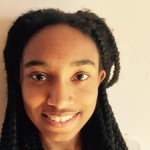 Mayssa Gregoire
Mayssa Gregoire
Fall 2017: Transferred to the University of Pittsburgh, Chemistry
Fall 2015 – Spring 2017: St. Joseph’s College, New York, Chemistry
Freshman, Chemistry
Expected Graduation: May 2019
Host Lab in Japan: LaSIE, Kawata Lab, Osaka University
Research Project Abstract and Poster: 3D Microfabrication of Boron Nitride Nanotube/Polymer Composites by Two-Photon Polymerization Lithography![]()
News | St. Joseph’s College New York | Mayssa Gregoire Named Nakatani RIES Fellow
Nothing like a summer in Japan at Osaka University to help you decide what you want to do with your life. Congrats to SJC Brooklyn’s Mayssa Gregoire ’19, one of only 14 students selected nationally for the 2016 Nakatani RIES Fellowship for U.S. Students
Mayssa Gregorie Receives Summer 2016 Benjamin A. Gilman International Scholarship for Participation in the Nakatani RIES Fellowship Program
The Gilman Scholarship Program is an undergraduate grant program for U.S. citizens of limited financial means to enable them to study abroad, thereby internationalizing their outlook and better preparing them to thrive in the global economy.
Why Nakatani RIES?
This summer I wanted to combine my interests in cross-cultural communication and science. I saw this program as a way to continue to have immersive experiences as it is a unique opportunity for deeper understanding of Japanese culture and research abroad. I liked that the program includes both a study of Japanese culture and an emphasis on science which I wanted to focus on.
I am most excited to work on my research project and participate in cultural excursions. I chose Nakatani RIES because I wanted to be challenged by being outside my comfort zone culturally and having my first research experience. Ultimately on a personal level this will strengthen my intercultural skills and initiative taking. Over the summer, I look forward to changing my perspective and orienting my decisions. As a student this program is most appealing because the realization of my research project will bring to life some of the concepts I have learned and/or will cover in class. In the future this will also enrich my classroom experiences and allow me to stay motivated, which is one of the main reasons I think the program is important for U.S science college students.
Goals for the Summer
- Improve my presentation skills
- Understand my research project including the underlying fundamental science concepts and context
- Be able to hold a basic conversation in Japanese
Meaning of Nakatani RIES: Post-program
This was easily one of my best and most productive summers. I learned hands on about graduate student life while exploring a whole new culture and gaining a deeper understanding of the world. I matured and I’ve confirmed that I would like to go to graduate school. I also have a new interest in deeper understanding of Japanese culture and East Asian studies in general.
Research Internship Overview
For my research project I was incorporating boron nitride nanotubes into the two-photon polymerization lithography technique. Boron nitride nanotubes can be considered attractive because of their comparable properties to carbon nanotubes (to a certain extent) such as high mechanical strength but also for example their thermal stability and electronic properties. My project was to mix the boron nitride nanotubes in for the fabrication of 3D microstructures by two-photon polymerization lithography. We anticipated this would enhance the properties of the 3D micro fabrications. This was my first time doing research, so this project meant complete exploration. It might be a combination of both my interest in the research topic and working independently but I genuinely enjoyed learning about the new material, and I would consider studying materials science. Working in an international research setting added another layer to the experience because I gained cultural perspective from working alongside my lab mates as well.
Everyone at the lab was friendly. I felt I could approach anyone with a question or concern and the everyday environment was a lot more relaxed than I expected. I had (almost) two hour long weekly group meetings with three to four other students and Kawata- sensei. Aside from when there presentations or meetings with senseis, the lab environment was casual. It was nice because I felt included because people would strike up conversations with me. My mentor and other lab mates would invite me to dinner or to explore different places. I also did not expect my mentor to be so helpful. We had an ongoing inside joke that he was “too nice” and he actually was. He helped me in and outside of the lab from getting my glasses repaired to organizing my data and experiments.
Daily Life in Japan
There was a free shuttle to campus and the last bus was at 8:50am so I would make it by 8:50am on most days and arrive at the lab by 9:15 this was quite early for the lab usually people arrived at 10:00 – 10:30am if they didn’t have a meeting. Especially in the beginning during late mornings, I would have informal meetings with my mentor about the progress of the research and usually in the early afternoons we would run experiments. On a a day we were not running experiments, I would read papers for potential future directions. For breakfast sometimes I would often go to the cafeteria because I really enjoyed their breakfast special. For about 300 yen I could get miso soup, fish, rice and a side dish with unlimited tea and water. For lunch the cafeteria was a good option or sometimes I would get lunch from 7-11 or the CO-OP, which consisted of usually a bento box, noodles or salad. During the weekends, I traveled around in the Kansai region. During my most memorable weekend Erica and I were able to venture out to Hiroshima, Miyajima and Naoshima Island.
- My favorite experience in Japan was … the weekend in Akita.
- Before I left for Japan I wish I had … packed more efficiently and brought summer clothes.
- While I was in Japan I wish I had … documented my experience more by journaling.
Excerpts from Mayssa’s Weekly Reports
- Week 01: Arrival in Japan
- Week 02: Trip to Akita
- Week 03: Noticing Similarities, Noticing Differences
- Week 04: First Week at Research Lab
- Week 05: Critical Incident Analysis – Life in Japan
- Week 06: Preparation for Mid-Program Meeting
- Week 07: Overview of Mid-Program Meeting & Research Host Lab Visit
- Week 08: Research in Japan vs. Research in the U.S.
- Week 09: Reflections on Japanese Language Learning
- Week 10: Interview with a Japanese Researcher
- Week 11: Critical Incident Analysis – In the Lab
- Week 12: Final Week at Research Lab
- Week 13: Final Report
- Tips for Future Participants
Week 01: Arrival in Japan
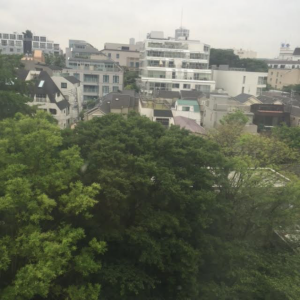
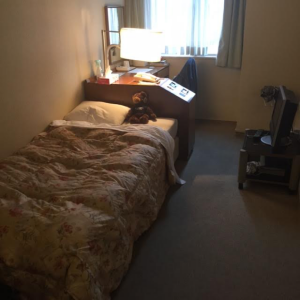
When I first arrived in Japan at the airport I was expecting cleanliness. The sanitation and hygiene have more than met my expectations. Everything looks brand new. This was definitely confirmed when I used the restroom at the airports. I was not expecting almost all the toilets in Tokyo to be heated and/or with “special” buttons. I first picked up on the things that I expected to be blatantly different than the U.S such as also driving on the right side. Also when Packard-san explained Suica card and we purchased our first cards I started to notice the efficiency of Tokyo.
Since we didn’t directly go or pass through the stereotypical images/neighborhoods of Tokyo such as Shibuya and Shinjuku I initially didn’t feel like I was in Tokyo. The Tokyo I had imagined was actually based on stereotypical images. However, once we walked through Azabu-juban and settled at the Sanuki Club, it definitely sunk in. Since I never expected to end up in Japan this summer, Tokyo has felt surreal at times.
Since people at home emphasize the cultural differences, I was constantly looking for big differences. The simplest things such as walking into a 7/11 or convenient store are similar experiences. One difference I noticed is in Japan the standard quality of food is higher than the U.S. I was not expecting to be able to eat several nice inexpensive meals at 7/11. I’ve been surprised by how affordable eating lunch and dinner can be.
We encounter a lot more humor/funny situations than I imagined. Packard-san is very funny.
Certain things are to a greater extent than I expected such as the level of cleanliness and punctuality. Also everything is highly organized. I didn’t expect there to be a whole part of Japanese language based on English words that we could use. My personal favorite is fureido potatoe. I don’t feel 100% reading and writing hiragana and katakana just yet, so keeping up with certain things in language classes have been a challenge. I anticipated doing a lot of hands on activities which have been really helpful and I have really enjoyed but I think I want to personally work on grammar and some vocabulary in order for me to understand how the language works.
I enjoyed the sumo wrestling event. I was surprised I followed the games so closely. The later sumo wrestler matches were most entertaining. The Edo Tokyo Museum tour was also very interesting for understanding Tokyo and Japanese history. We have also had great dining experiences such as the lunch we had on the second day with the President of Nakatani Foundation. Although dining experiences have been giving me anxiety lately since I have realized my chopstick holding technique and skills are less than perfect.
Question of the Week
Why do Japanese students tend not to want to study abroad?
Introduction to Science & Engineering Seminar
The Intro to Science & Engineering lecture covered the fundamental concepts we need to understand our research projects. It was a helpful and necessary review of the concepts behind our research field. This ensured everyone had the opportunity to review. The lecture covered metals/insulators, nanoelectronics, nanophotonics,nanomaterials and quantum mechanics. I found the lecture parts about material properties to be most captivating. The discussion about nanomaterials reviewed metals, insulators and semiconductors and their applications. The importance of the band gap was emphasized in distinguishing between a metal, semiconductor or insulator. I thought it was interesting how graphene is characterized as a semiconductor even though it has no band gap.
Although I haven’t covered some of the concepts in class (or at least not in depth) I understood the logic of the explanations, I was able to follow the main points. I found the part about nanomaterials to be easiest to follow and most captivating.
The lab tour component was a valuable experience. I enjoyed the chemical engineering lab tour at Rice during pre-departure. The grad students gave a good thorough tour of the lab’s main goals and projects. This was my first time in advanced technology labs and I particularly enjoyed seeing the robots designed for surgery at the biomedical lab visit in Japan. I appreciated the small presentations that explained the devices which included visualization of how the robots worked.
Initial Research Project Overview
I will be doing a study of nanofabrication based on two photon polymerization. I will be working on a specific technique in nanofabrication called two photon polymerization or the 2PP technique. I’ll be working with photosensitive material. I will be using Femtosecond laser radiation to polymerize sensitive material. Polymerization can be defined as a process when monomers assemble and form three-dimensional networks of highly cross-linked polymers. This technique works by light triggering a reaction which leads to polymerization of photosensitive material. This technique can be used for instance in the fabrication of 3D photonic crystals and also has biomedical applications.
Week 02: Trip to Akita
The weekend in Akita was my first time experiencing many drastically new things in such a short span of time. The stay at the ryokan was impactful itself but I was most impressed by the hospitality. The hotel owner embodied humbleness. I would have never assumed he was the hotel owner. He came and asked us individually if we were comfortable and enjoying our meal. The staff let us take mochi in our room and gave us little dessert cookies with our lunch. These small gestures even contributed to my personal motivation for discussing the problems regarding attracting tourists to Akita.
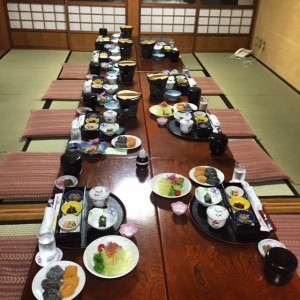
Something I’ve enjoyed observing is the level of care and importance given in social situations and also objects. So far I’ve only seen positive results. I noticed the high school students came dressed in formal wear (their suit and ties) to deliver their presentation for us. Also their high school was so clean it looked like what it might have looked like during the grand opening. Punctuality goes with the importance of etiquette and attention to detail. I noticed the KIP students scheduled all of our activities including our discussions and game activities. Our discussions were structured into strategic chunks of time and when we transitioned they ensured we were on time even for the games they planned. This might have been because this was a special occasion. I keep unintentionally looking out for the Japanese core values vs. American core values we went over during pre-departure.
The trip to Akita was authentic and comforting. I would highly recommend this experience to anyone traveling to Japan. The weekend was packed with many activities and discussions but after the first few days in Japan the change of pace was nice. Overall this trip was a good way to end the first week in Tokyo. One of my personal travel goals was to truly experience the culture in rural areas because I have recently developed a particular fondness for agriculture and natural scenery. After the excitement of the first few days, I was ready to gain insight about that aspect of Japanese culture.
Question of the Week
I realize people at home have a lot of misconceptions about Japan. A silly example is a handful of people told me I would be eating basically only sushi here and this is obviously incorrect. So I wonder what are misconceptions or over generalizations Japanese people have about Americans?
- For an interesting perspective on what Japanese undergraduates think about the U.S., you might want to read the student profiles and weekly report excerpts from the 2016 TOMODACHI STEM @ Rice University Program. These 10 Japanese undergraduates participated in a 5-week research internship experience in the U.S. and many of their weekly reports reflect on various aspects about the U.S. that they were surprised by or were interested to learn more about during their time abroad. See also the ‘Small Talk, Happiness and Optimism’, and ‘Stereotypes of the U.S.’ sections of the Life in the U.S. resource page.
Week Two Overview
I caught some of us, including myself, calling the Sanuki Club home. One of my favorite neighborhoods to walk around in Tokyo has actually become Azabu-Juban (where the Sanuki Club is located). The highlight here is walking. I like that in almost all the Tokyo districts (or at least the ones I’ve been to) the big streets branch off into smaller streets and alleys for mainly pedestrians. Getting around is easier than I expected. In my opinion compared to the subways in New York it is almost impossible to be truly lost in the Tokyo underground. There is only one line per track and constantly specific directions towards each line. As for outside, there are information centers and maps at almost every corner, especially in touristy areas.
Although one time during a lunch break (after language class), I was slightly disoriented mainly because it was ten minutes before I needed to meet the group and my phone was out of battery. It was a day I left the security of being in a group to go to the bank. After asking two people for directions and still being lost I decided to ask a third person. Most of the people here have responded to me in English but the third man I asked didn’t speak English. I was able to communicate where I needed to go and pointed at the time. Within seconds he understood and he started to jog towards where I needed to go which surprised me. While I jogged alongside, he further surprised me. He kept speaking to me in Japanese (rare occurrence) despite me repeating, “I don’t understand” in Japanese. When I was back on a recognizable track, I realized he ran out of his way for me to be on time and figure out my location. After I left, he had stood there waving still making sure I went down the right path. I wish I knew what he said while we were jogging because it was probably funny.
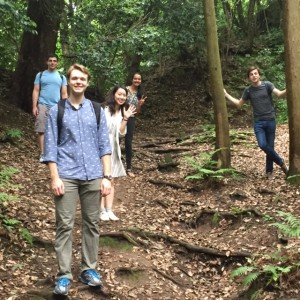
I am getting a bit more used to the fast pace of Japanese classes. I want to take up learning Japanese the slow and steady way to make sure I understand and have the vocabulary down instead of vaguely remembering phrases for random situations. I tend to be either one or two words off for phrases or I confuse the letters when I use my vocabulary. This crash course introduction is a good first step before I set my own pace. The language teachers are encouraging and patient which has helped. Everything else this week has been really fun: the taiko drumming, the museum tours and the independent sightseeing. During a trip to Kamakura, some of us went on a hike and it felt nice to be on an actual hiking trail for about an hour (with bamboo forestry too).
Intro to Science & Engineering Seminar Overview
This week Prof. Stanton gave two lectures. He discussed semiconductor physics and also stressed the necessity of the semiconductor gap for instance in applications for transistors, LEDs, lasers and solar cells and nanotechnology in general. He was successful at explaining and getting us to understand the bigger picture, especially when he discussed the importance of femtosecond laser spectroscopy to characterize semiconductor nanostructures. For example, I found the analogy of this concept to a story about a bet that used stop action photography really helpful. It was a fun and memorable way to visualize. It’s nice that the presentations seem to overlap.
Prof. Otsuji, from Tohoku University, covered the terahertz frequency regime and graphene in his lecture with plenty of enthusiasm as well. Dr. Ishioka, from NIMS, also discussed different types of lasers and gave an overview of the pump probe method and her work. I liked the inclusion of her personal story and the overview of Japan’s gender imbalance in science professions.
Week 03: Noticing Similarities, Noticing Differences
Except when stairs have up and downs signs and the universal rule of giving up your seat to elderly, handicapped, pregnant women, kids etc., the rules of the subway are unwritten. More of a social code exists and is well respected. Typically in Tokyo people know to line up when they are getting in and out of the train. When it comes to escalators people line up on the left if they are standing and go up on the right side if they want to walk up, which is extremely efficient in my opinion and at least saves people the burden of having to excuse themselves multiple times or push. In the subway people sit normally, if anything I haven’t seen much slouching. Typically the subway is also quiet for such a populated city and public space. When fewer people are in the subway for instance and it’s not rush hour, it’s extremely quiet.
I noticed people tend to listen to music, scroll through their smart phones or sleep. Occasionally there are people engaging in quiet conversations. People usually aren’t loud and don’t eat or drink.
The subway in Japan feels luxurious compared to my experiences in the U.S. The subway is very clean and the trains go faster. The people are extremely well dressed which factors into the experience. Another difference is there aren’t many or any subway performers like I’m used to seeing in New York.
We haven’t taken many buses here but on our way to the shinkansen station Erica, Donald, Daniel and I decided to take the bus because we thought it would be much easier with our heavy suitcases. I guess from our standpoint we thought it would be practical since the bus turned out to be cheaper and we could save twenty dollars (the cost of sending our luggage). Personally I think this was a bad decision. We should have listened to Sarah-san’s advice. She highly recommended we use the baggage delivery system.
The bus ride was probably the most uncomfortable twenty minutes I’ve had in Japan or even this year. Mostly because the situation became increasingly uncomfortable as the ride went on. All the unwritten rules or social code became very apparent on this bus ride. Perhaps we expected the bus to be a bit wider so people could still easily pass despite us sitting with our luggage. This was not the case. People couldn’t pass easily down the bus and also couldn’t sit because we were taking up most of available seats at the front and the walking space. As the bus stopped at other stations, elderly people came in and we kept struggling and figuring out ways to leave room for them to sit which only raised more attention towards us. One elderly man in particular who was able to walk through and sit would let out long and loud sighs and hmms which indicated his disapproval and discontent with the whole situation. One other woman kept rolling her eyes whenever I looked at her.
We broke the rule about efficient use of confined space because we took up about 85% of the bus walkway with our luggage. We went against the wa harmony value regarding making decisions towards the common good over the personal good and the group consciousness mentality as well since our decision to bring our large sized and heavy bags caused inconveniences for the other passengers. The passengers who indirectly communicated their discontent through body language were exhibiting avoidance of confrontation since they were being indirect. On a positive note we showed impressive teamwork in figuring our way around the situation and arriving on to the right bullet train.
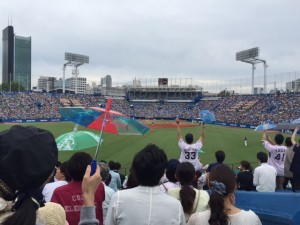
Go,go swallows! – Mayssa Gregoire
This week Dr. Shimuzu gave a lecture about the history of U.S and Japan relations through baseball. I liked that we were able to gain perspective about the relations between the two countries by focusing on the history of the sports’ origins in Japan and its timeline since. Now I am more informed about the long history of ties and how baseball encapsulates it. Also it changed my perspective on baseball because when we went to a baseball game our last day in Tokyo everything came full circle and watching the sport became interesting with all the new meaning behind it.
Overall this week consisted mostly of independent the cultural excursions. I went to Shinjuku and Shibuya several times. I enjoyed wandering the streets in the evening with the lights all around and eating new food.
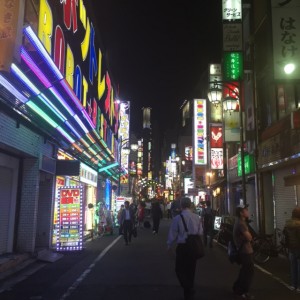
Intro to Science & Engineering Seminar Overview
This week Prof.Bird’s lectures were extremely helpful. Since the topics this week also overlapped with previous ones, I gained confidence in my understanding of certain key points from other lectures. Prof.Bird gave two lectures. One lecture was about graphene and the other was about semiconductor band gap engineering. I learned a lot from this week’s lectures and retained most of the information. This probably is because Prof.Bird nicely reviewed points topics that were previously discussed such as the properties of graphene and its potential applications and limitations. Also in the band gap engineering lecture review of quantum effects, the role of the energy gap and how the semiconductor industry or band gap engineering field utilizes the band gap.
Overall although I understood the necessary points to remember, I want to review the details about why graphene can’t be fully turned off and how a band gap can be introduced or the ways to overcome this limitation. I think since it was my first time hearing about these microscopes and their usage, I found certain points from Prof. Aoki’s lecture complex and I would like to review them as well.
Also, Prof.Bird’s lecture about life in Japan as a foreigner was humorous and insightful.
Return to Top
Week 04: First Week at Research Lab
In retrospect the first day at the LaSIE, Kawata Lab, Osaka University was funny because my lab mentor came to pick us up and we went through several trains with our heavy luggage. Then when Erica and I were heading towards our dorm, my mentor saw us struggle with our luggage in the hot weather. He kept offering help and we kept refusing until finally we accepted because it would have been impossible for us to carry our luggage up all those flights of stairs. Now this is funny because the next day he felt comfortable enough to inform us we had taken the longer route, which included a long steep uphill walk because he was not sure about the way. We also commented about how it strangely felt as though a week had already passed by the second day.
The rest of the first day I met the other lab mates and professors and went through many fun awkward introductions. They also seemed to enjoy my omiyage snacks although now I regret my packaging choice a bit since they said they expected something strange or funny based on my shiny gold packaging. My mentor gave me papers to read and in the evening I took the shuttle bus back to Minoh campus and finished settling in.
My mentor is Mochizuki-san, but he enjoys being called Dr. Mochizuki so I call him Dr. Mochizuki which other members find funny. Dr. Mochizuki is very kind and I’m grateful he helped us carry our luggage. I guess I didn’t expect him to be as approachable as he is. He likes to laugh a lot which is nice because I like to joke around too and I feel comfortable asking naive questions. The language barrier isn’t an issue because he speaks English fluently. Occasionally, he likes to say phrases in Japanese, which is encouraging and motivating. He’s usually excited when I properly say phrases.
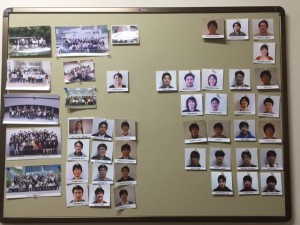
Generally people in the lab are super friendly and speak English. However most conversations happen in Japanese. I want to learn more Japanese over the summer to understand some of the conversations at lunch. I don’t think my ability to speak Japanese will affect my work but maybe from a social standpoint being able to be conversational in Japanese would be beneficial. Besides from the picture of the members on the wall, the hierarchy in the lab is less obvious except for when Kawata-sensei is here. During my first meeting on the second day I met Kawata-sensei, and we cemented my research project topic. Kawata-sensei is clearly at the top and well respected.
The housing is cleaner and honestly better than I expected. The dorm style is a bit different just because I just imagined it being the way it typically is in the U.S. It is also a bit smaller than the room at the Sanuki Club but I found ways to maximize the space. For transportation to and from the lab, I commute everyday by the free shuttle bus, which comes hourly at three different times in the morning and leaves hourly at different times from Suita campus. The other possible way is the monorail and at this point I am still figuring out basically the path to the station from the lab.
Overview of the Orientation Program in Tokyo
Although the orientation program daily routine is completely different than the life in Osaka, it was a good start to the summer. I am grateful we had the opportunity to explore Tokyo and other parts of Japan and be tourists during the first three weeks. Everything has been fast paced since I took my finals early but I liked the contrast between the educative discussions about science and culture and the independent wandering in Tokyo. The Sanuki Club and its location were super convenient. The weekend trip to Akita and the day trip to Kamakura nicely complemented the stay in Tokyo as well.
I appreciated our cultural analysis of Japanese values it allowed me to better pinpoint some of the culture shock I faced, which was related to punctuality, and level of politeness and the extreme indirect communication. We discussed how in any given social situations it is unclear whether or not we have done or said something offensive because people tend to suppress their disapproval or be passive. The whole culture of guessing what the other person might be implying in conversation seemed somewhat comical or extreme but knowing this has made me think twice before acting or speaking. I’ve become more patient and observant, especially in the lab. I’ve noticed how this cultural aspect plays out in interactions between my mentor and Kawata-sensei or Kawata-sensei with other lab members even when they are speaking English. To a certain extent the group consciousness and the common idea of extreme humbleness resonate with my personal values. Although sometimes when I first meet people my tendency is to talk about myself. My mentality is I’m offering the other person information about me so they could potentially relate but I wonder if people interpret this as egocentric anyways. It is interesting to be in a cultural environment where there are sharp contrasts with the American mindset.
Initial Research Project Overview
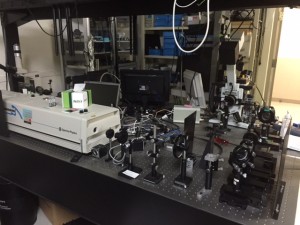
This summer I am working with boron nitride nanotubes, which are an attractive material because they display similar mechanical properties and thermal conductivity as carbon nanotubes but also have unique characteristics such as higher thermal stability, a wide band gap, transparency in the visible region and ability to shield neutron transmission. These unique properties are the reason they are considered a “hot topic” according to the lab because potentially boron nitride nanotube nanocomposites could have great applications in different engineering fields (i.e. aerospace and armour materials).
I am doing 3D microfabrication of boron nitride nanotube/polymer composites by two photon-polymerization lithography. I am using the currently available optics and materials to mix boron nitride nanotubes in a polymer and fabricate micro/nano- structural boron nitride nanotube composites in form of chosen designs by two-photon polymerization. The goals of this project are to see the possible enhanced properties for polymer composites due to mixing in of the boron nitride nanotubes and to successfully nano fabricate boron nitride composites while mixing in boron nitride.
During my experiments I will be preparing boron nitride nanotube dispersed photo resins. Then I will be fabricating 3D micro/nano structural boron nitride nanotube polymer composites in form of a programmed structure. Finally I will be characterizing the BNNT-dispersed photo resin and BNNT polymer structures.
Week 05: Critical Incident Analysis – Life in Japan
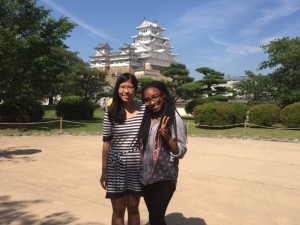
This week Erica may write about this incident a as well. On Saturday we decided to go to Himeji to visit Himeji castle, and Koko-en garden. When I arrived Erica had told me she had asked if we could get a guided tour of the castle in English at the volunteer store but she had also received a free postcard. She recommended I go in and ask to get a free postcard. I followed her recommendation and got my free postcard. We were told there were no English tour guides available but for the tour of inside the castle there would be English tour guide volunteers.
Several steps out of the station while we were planning which way we wanted to walk to Himeji castle a 5ft tall Japanese senior citizen walked by us and presented himself. Initially we thought he was just offering to walk us to the castle but he quickly asserted himself as our tour guide. We had begun to plan eating before heading to the castle because we had not eaten a full breakfast or lunch. It was also really hot and sunny outside and we just wanted to eat and relax before our 2-3 hour tour of the castle. Instead it became clear the information center had possibly sent this man with us and he was not backing down from showing us every point around the castle.
From my understanding this man understood very few English words but wanted to communicate with us. He kept speaking in Japanese but also very quickly. Followed by several wakaru’s saying do you understand, do you understand? Sometimes he would repeat his statements but just as fast. He walked very fast in front of us when we were moving from place to place we had to follow him with a light jog. Meanwhile we were sweaty and hungry and because we couldn’t understand what he was saying it the situation was all the more tiring and almost dreadful. He was so energetic and positive that his tour became worth experiencing though; despite the conditions and language barrier. After 2 to 3 hours of walking or, really, jogging behind him all around the castle, the tour finished and it was time to visit inside. We purchased our tickets and said our goodbyes or so we thought. We agreed that we should eat first and deserved a break so we made our way back out in the direction the guide had taken.

We mentioned it would be awkward if the guide saw us walking away from the castle. As I was saying it would be better if we didn’t bump into him he came almost running towards us with a huge grin on his face. He opened a white plastic bag inside there were two omiyages. He had bought us each a box of cookies. This made us feel happy but also guilty because we had been almost complaining about the situation. Finally he walked us to the garden all the way in front of the restaurant.
Before our final goodbye we wanted his contact info or address so we could return the gesture as well. At first he simply nodded his head no but we insisted and kept insisting until his smile faded. We thought he would appreciate us sending him a nice e-mail or thank you card but instead it looked like we made uncomfortable. We may have overwhelmingly insisted because we even went through Google translate to make sure he had understood but it was clear afterwards he did not want this exchange.
This situation turned into a learning experience which confirms that any situation can turn into a learning experience. When he handed us the gifts I felt I had been a bit selfish or egocentric because I realized he was facing similar discomfort. He was also in the hot sun and could not understand us. This experience was also good because I am not always presented with the challenge of communicating when neither of us speak a shared language.
Research Project Update
This week I started the first part of the project with my mentor. We made samples of Boron nitride nanotube (BNNT) dispersed resin with different weight percentages.We had values of 1%, 0.1%, 0.01% and 0% as a control. The procedure was loading BNNTs into the R-712 acrylate monomer and then dispersing by ultrasonic bath for 5 minutes followed by sonication for one hour. The dispersion lasted longer than expected because originally we believed the duration would be 30 minutes. Next we added both the photoinitiator and photosensitizer at a ratio of 1.6 wt%. The photoinitiator was Benzil and the photosensitizer was Irgacure 369. We want to follow similar procedures from a previous project carried with carbon nanotubes. The similar research experiments done with carbon nanotubes monitored the amount of aggregation by testing sample resins with different wt% of carbon nanotubes. At this point, the threshold for boron nitride nanotube content before too much aggregation was being tested by making different samples as well and we used bright-field imaging to view the extent to which the boron nitride nanotubes had aggregated. Of course one of the key properties of Boron nitride nanotubes is its transparency in the visible region which means to properly view the aggregation we should use phase-contrast/dark field imaging. Next we will use dark field imaging and continue to test for the highest boron nitride nanotube content possible for fabrication to still run smoothly.
Week 06: Preparation for Mid-Program Meeting
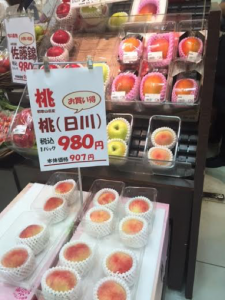
I have had many mini accomplishments here thus far especially when it comes to communication. I can now quickly understand the price and the change when I make purchases, which is quite the accomplishment. One of my goals for the summer is to improve my presentation skills. Although public speaking has always been a skill that I needed to develop, it’s something I’ve avoided. I presented a science paper this week because this seemed like a rare opportunity, as I don’t think I had ever spoken in front of more than twenty people. Of course there is room for a lot of improvement. The quality of my presentation was not where I would like it to be but this experience has definitely enabled me to be more comfortable giving presentations. In the future I hope that when I am asked to give a presentation I won’t have to think twice or be nervous. Now it somewhat isn’t completely natural to me yet but I’m confidently embracing the opportunities to practice public speaking. I anticipate that in the future it will be useful and it’s an admirable skill.
Maybe my “biggest” challenge at this point revolves around my eating habits. Typically I don’t have time to cook at the dorms, so I haven’t invested in kitchen appliances. I usually resort to eating the food in the cafeteria or in convenience stores. The cafeteria typically has good meals although maybe not the most balanced. They sell some vegetable side dishes and I’ve taken advantage of the good breakfast deal, which consists of rice, a choice of fish or chicken, a side vegetable dish and unlimited green tea for 300 yen. I usually buy dinner at a convenience store or the cafeteria too but I would like to eat healthier meals. Since I haven’t been eating many fruits due to the price, I realize that fruits make up a huge part of my diet back at home. I will have to figure out how to make smarter eating choices for balanced meals. Another challenge, which goes along my eating habits, is my fitness level. I don’t typically play sports back at home but I would spend a lot more of time walking around than I do here. The extent of my fitness activity here has been the two-minute sprint to the shuttle bus stop every morning. I would enjoy playing a sport at some point.
In terms of research we seem to be up to date based on our timeline or maybe just slightly behind but there seems to be no concern since we can start the fabrication process this week.
Research Project Update
Last week we continued to optimize the parameters for mixing in boron nitride nanotubes (BNNTs). We spin coated the samples for a smoother surface and we put them under UV light. We looked at the dark-field images of the BNNT samples but we found that when we spin coated them there were aggregations on the glass substrate. We also used the samples again without spin coating them and looked at the dark field images. We created more samples with different weight percentages using a similar process except with a longer sonication for better dispersion and looked at their dark-field images. It seems in terms of how much they aggregate at different weight percentages boron nitride nanotubes and carbon nanotubes are similar. However since BNNT and CNT differ in optical properties, it might be possible to mix in more BNNT without worrying about the fabrication process not running smoothly. This week we’ll be looking at the Raman imaging to ensure the presence of Boron Nitride Nanotubes. Afterwards this week’s goal is to create a first nanostructure with boron nitride nanotube mixed resin.
Week 07: Overview of Mid-Program Meeting & Research Host Lab Visit
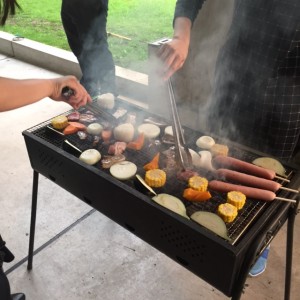
The mid-program meeting activities were similar to the orientation program. We now have rich new experiences to add to our repertoire especially in terms of eating and visiting historical sites. The three-day stay in Kyoto was packed with cultural and also science related excursions. I liked that after our Mid-Program research presentations we were able to fit in a trip to Ginkakuji, which nicely complemented our visit to Kinkakuji temples the next day. Overall this was my first time seeing many world heritage sites in such a short span of time. We also had the privilege of getting exclusive tours and a look inside Kamigamo shrine, which was extremely special and shows how much the overall experience so far has actually been a once in a lifetime opportunity.
I want to make sure I maximize every moment. The greatest impact on me so far has come from observing Japanese aesthetics from the natural scenery to the way food is presented. During the Mid-Program Meeting the tea ceremony in particular embodied what fascinates me about Japanese aesthetics. The way the preparation of the tea was detailed and well thought out but the hostess’ graceful execution made it seem so minimalistic. It was nice because we also took part in the tea ceremony aesthetic because the etiquette required from guests followed similar patterns. One thing is there is such a great focus on gracefulness and proper sequence that it can also feel as if there is no room for error, which can be a bit intense. Maybe this has been my biggest challenge yet because it seems in most social situations there is a tendency or it feels as though people want to avoid awkwardness or making mistakes at all costs. I guess maybe the American or my way accounts for awkwardness since culturally there was never extensive emphasis on gracefulness (and politeness) versus here it seems people try their best to ignore mistakes or slipups. Or maybe this is all because I am still being introduced to more formal social settings. However I am learning not to take myself too seriously because at the end of the day were having fun and trying new things.
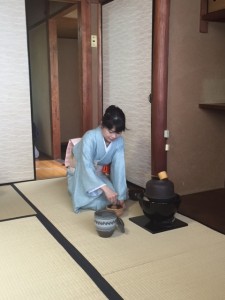
Overall during the Mid-Program Meeting it was great to see everyone again and celebrate the 4th of July and some of the other Nakatani fellows’ birthdays. It was motivating to hear everyone else’s experiences and their accomplishments, which has made me reflect on what I’d like to accomplish before the end of my time here. Prof. Kono’s visit also helped put everything into perspective. Explaining my project and expressing my goals and challenges during the visit was very beneficial. I have a sense of where I am now in my understanding also with the vague answers I gave to the questions that were asked after my Mid-Program presentation. I definitely have work to do to better understand my project.
Research Project Update
This week we went over the rough schedule for the project. We determined our next steps for the next two weeks are finding a way to increase the Boron nitride nanotube content while perhaps using a surfactant or changing the monomer. We also discussed using a monomer with lower viscosity and working on the isolation and dispersion of boron nitride nanotubes. In the near future perhaps we’ll change the protocol and increase sonication time. We also plan on reviewing the aggregation and dispersion after those modifications. Now we have to do Raman imaging as well while removing the photo initiator or photo sensitizer so we can get a better spectrum. Following this we plan on working towards the optimization of the TPP process by perhaps tailoring the ratio of initiator and sensitizer and also modifying the laser power and exposure time. Next we’ll move towards the end of the project: the fabrication of the structure and a measurement of the spring constant. This coming week I will be working on finding the protocol they used for when they used surfactant and knowing what kind of surfactant they used.
Return to Top
Week 08: Research in Japan vs. Research in the U.S.
Hierarchy is important and respected in the lab. The main rule is to respect the hierarchy and the way you address your seniors is very important. It’s important to show respect and this way the hierarchy is made clear. I’ve noticed some of the students tend to slightly bow in the hallways when saying hello to their seniors and especially for professors. Honorifics are also central during communication and the rules of the lab since everyone uses honorifics. Hearing the -kun or -san is a fundamental way of acknowledging the hierarchy. Another unwritten rule is to never directly disagree; at least in conversation. The words “maybe” and “actually” are keywords in the lab or at least when communicating in English. After words like “maybe” or “actually” usually the other person should assume this person disagrees so direct confrontation or clashing of ideas is mostly completely avoided. Although somehow both people can understand there’s been a disagreement if both are aware of the social code anyways.
So far the lab has been a lot like I expected based on what my alumni mentor had shared and the orientation program’s introduction. I’m grateful because the intro to Japanese culture and my alumni mentor’s experiences helped me shape realistic expectations. Although I did expect to have had somewhat of a conversation with each person by this point in my stay and I haven’t. It’s actually normal and it’s reassuring because one of the post docs here who is also a foreigner and travels between Tokyo University and Osaka University said he’s been in the lab for 3 years but hasn’t personally talked to a few of the people in the lab. One nice thing is I didn’t expect was people to come up to me and start conversations. I expected to have to start conversations but overall I think it’s nice because people try to include me in conversation and there’s been an effort to help me integrate into the lab work environment.
In terms of academic research in Japan I think people value good results, rigor and working long hours. In terms of thoroughness and results I would assume the same thing would be expected in the U.S although working long hours in the lab to the point of sleeping in the lab might not be as common in the U.S. I am not sure because this is my first research experience but I look forward to making more accurate comparisons in the future. In terms of work environment, I assume people here are much more focused on their own work due to the cultural values.
I assume in the U.S there are much more interactions between co-workers whereas in Japan there is little exchange. As a result the work environment is a lot quieter too. Usually people ask me to speak louder but in the lab it seems my voice projects loudly and far. Also gender gaps seem to be very prevalent since there is only one woman in the lab and when discussing with one of the post-doc in the lab he mentioned culturally men know to address women very differently and genders are typically separate.
One of the final parts of my project is the SEM imaging of the microstructures I’ve fabricated. Apparently use of the system is quite complex which I also assumed but didn’t think about at the time. I’ve seen the post doc who helps me operate it a few times and it looked cool. In the spur of the moment I thought about learning some parts or helping out with even the simplest tasks not necessarily the whole operation by myself. I first asked my mentor as the post-doc was carrying out the tasks. My mentor said yes maybe one day and then I started to ask if maybe she could help me learn to operate it and he said ‘maybe yes’. I forgot about the ‘maybe’ that could imply maybe not. Since he said yes afterwards, I turned and asked her if it would be possible but after a short silence she answered astonishingly with a question “do you want to learn how to operate?” I realized and felt like I had made a mistake asking because there was a long silence afterwards and they started to speak in Japanese. In that moment I regretted asking and it was one of the most indirect situations I had ever been in. It seems silly, and I also realized they might have misinterpreted. I should have made it clear that I just wanted to assist very small tasks not necessarily the operation from A to Z.
Research Project Update
In terms of research this week, I didn’t get a significant amount done because we were at the Mid-Program Meeting for half the week. However, we checked for Raman imaging again with the highest percentage of boron nitride nanotubes (BNNTs) we could add and we still couldn’t obtain a clear spectrum depicting the peak found for BNNTs in other papers. We did some fabrication of the letters LaSIE because we wanted to find the tendencies of the different weight percentages in the microstructures. We’ve been able to fabricate with BNNTs in the mix but the structures showed some discrepancies and the letters of the microstructures were slightly wider than in the ones without BNNTs. I’ve been reading a lot of papers for methods to better disperse the nanotubes and increase the content. We found the best way might be changing the monomer we mix the BNNTs with, which we’ll modify next.
Week 09: Reflections on Japanese Language Learning
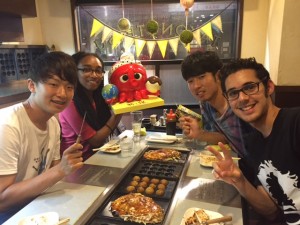
Learning Japanese is a work in progress. In some situations I’ve found I have underestimated my ability to respond versus other times I am overconfident in my ability to accurately communicate. At this point, I have my key Japanese phrases that I cling to and say at least once a day, which I think everyone, has too. There is room for improvement. During orientation languages classes, I didn’t feel I retained as much as I wanted to. This is good because I am currently taking another beginner Japanese class that is very conveniently located in the building next to my lab and free. So far I sense I have learned a good amount because although I still learn new words, I am a bit ahead of the classes pace because I have gone over the material in the past. I still enjoy the class because it is a good review.
I don’t absolutely need to use Japanese in order to communicate because all of the lab members seem to be at least conversational in English. However, I hear a lot more Japanese in the lab because during the orientation I was just with the other Nakatani fellows. Since most of my lab mates are Japanese most conversations happen in Japanese anyways. I try to recognize a few words or what they could be discussing, and sometimes I catch a few phrases I have learned, but most of the time I think it is good for me to see the context and listen to phonetics. I’ve downloaded a few apps and dictionary apps, and I’ve been making flashcards on Quizlet. I’m currently figuring out ways to best incorporate study but I think I will always be looking for ways to improve my study habits. Lately I’ve been focusing on my reading. Whenever I can, I try to read the hiragana or katakana written. Maybe this will help me start to make associations and improve my reading speed. I think the part of Japanese language I enjoy the most is reading because I like the mini challenge of trying to quickly remember the sound associated with the characters and the meaning of the kanji.
Before my experiences here, I liked the writing and listening to people speaking Japanese. As of now, I think I would like to continue learning at home. Sometimes I wonder how often I can actually use the language, but I think it is definitely worth learning regardless because I enjoy learning about Japanese culture. From Japanese people, I honestly have received mixed reactions. Mostly my experiences trying to speak Japanese have been positive. I even have had a few surprise short conversations with people and they were willing to speak to me in Japanese regardless of my beginner language skills. The people I’ve come to know better such as my lab mates are most encouraging. Strangers seem to readily speak or prefer when I attempt to speak Japanese sometimes. Although I fear in the U.S this won’t be the case for instance if I want to speak with a Japanese American and it’s clear they are perfectly bilingual and comfortable using both languages I could see how the majority would want to just speak English. Overall, I feel motivated to learn more, and I just have to find people willing to speak to me and help me practice at home.
Research Project Update
This week I’ve been reading papers, mostly about which ways to improve the boron nitride nanotube (BNNT) content weight percentages by different methods and choosing which method would be feasible given the time given to complete this project and the supplies available. Our next direction is using MMA as a monomer instead of R 712 because we found publications where they were able to go get up to 10wt % BNNT as opposed to now our maximum for fabrication is 0.01 wt%. We’ve also decided to start looking at optical properties and looking for a possible change of the refractive index before and after polymerization including nanotubes. It’s possible this result could be useful for other applications as well if after polymerization there is a higher refractive index.
Return to Top
Week 10: Interview with Japanese Researcher
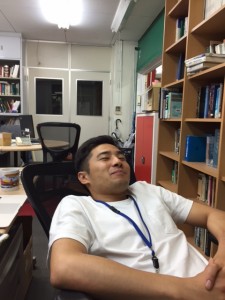
This week I interviewed Dr. Mochizuki a postdoc at LaSIE and also my mentor.
What is your current degree and how did you decide to come to Osaka and study physics?
I’m a 2nd year postdoc in Applied Physics. The primary reason I came to Osaka was to practice Osaka ben (Osaka dialect). My score was not high enough to do biology and I was assigned to physics. Yes, now I like Physics.
How was student life as an undergraduate vs. Masters? What are your experiences now as a Postdoc?
When I was an undergraduate I was just busy completing both the experiments and my part time jobs. Also I did some club activities like tennis club activities. As a master course student, I became a more serious researcher and plus I started to really enjoy physics in this time. When I teach or advise students it makes me feel like a post-doc. Otherwise I have just been busy. Yes mostly busy doing work also other than research such as preparing documents and maintaining the laboratory.
How do you think being a student in the U.S differs from being a student in Japan?
U.S students are much more curious about many different things and tend to express themselves. They prefer humor and jokes much to Japanese students who are sometimes too serious about research in a sense.
How does your career path differ from the career path you intended?
I did not think I would become a postdoc. I thought I would just go to the company and have boring workdays. As a postdoc here, I have more freedom in terms of what I want to do.
What are the topics you are currently researching?
I am currently researching ways to understand biological phenomenon and building optical imaging or spectroscopy. Yes, I really enjoy this project.
How would you describe the work environment at LaSIE? How do you think labs in Japan differ from labs in the U.S?
Its really laidback, but also organized. Maybe concerning getting the research done it’s too serious. In Japan the work attitude is much more serious. People are very focused on doing independent work versus in the U.S perhaps people would be more open to bouncing off ideas.
How were your international experiences in Morocco?
Generally In Japan I would not be considered very serious and a hard worker, but when I was in Morocco I was the only very serious guy and everyone called me crazy. I was there for two months and a half. I was happy because they were really direct and natural and I didn’t have to try and interpret. Also there were many types of equipment or some materials for experiment but the system was not as organized so there were only few people who could use the new machines or setup. It made me realize we need the setup but also the organized circumstances or system is important.
How many international researchers work at LaSIE/ have worked at LaSIE?
Now there are currently four researchers including students. Every year there are around 3-4 international researches. I am happy to work or study with them. Besides me everyone in this laboratory feels the same because we are really interested in them as a foreigner, also just as friends and sometimes maybe to practice English.
How has the internationalization of research impacted your work?
When I started research it was already internationalized so I cannot imagine if we cannot read the papers or collaborate with other researchers. I would say it’s been a positive and perhaps a necessary occurrence.
What are you interested in knowing about the U.S and me?
As I answered in previous questions it’s really easy to communicate with every person from Nakatani RIES (NanoJapan). I can understand what you really want to do and what you are interested in or what you don’t want to do or dislike. Now I want to know your opinions about Japanese students and researchers and your answers to the questions you asked me, if you really appreciated me as your mentor. I also want to know the differences between the U.S labs and Japanese labs.
Research Project Update
This week we did many experiments concerning increasing the boron nitride nanotube percentage mixed in with the resin. Based on literatures that had proven to work for better dissolving of the boron nitride nanotubes, we conducted experiments based on protocols in those literatures. We started by trying N, N dimethylformamide and MMA as a monomer with finally 0.1% BNNT. We were unsuccessful in complete dispersion of the nanotubes. Following this we tried the N, N dimethylformamide. The BNNTs and the R712 they were still not entirely dissolved, but we found that the BNNTs were better dispersed in the R712 monomer.
Also we tried having just 0.1% BNNT and MMA without the surfactant, and in that same manner we found the nanotubes were better dispersed in the R712 monomer. Next we tried using sodium dodecyl sulfate for dispersion of the nanotubes, and we found that we were able to disperse the nanotubes with 0.1 wt% BNNT content. We want to try and disperse the nanotubes without water and just the sodium dodecyl sulfate, the nanotubes and the resin. This way we predict we will be able to incorporate higher weight percentages of boron nitride nanotubes. Also we want to try and look for alternative ways to disperse the nanotubes other than ultrasonication perhaps a more mechanically based method.
Return to Top
Week 11: Critical Incident Analysis – In the Lab
There hasn’t been a critical incident specifically but I have noticed a few small incidents occur. Generally when communicating I have to indirectly understand what my advisors want me to do as opposed to what I think I should do. My mentor likes to suggest options, and usually one of the two options is the option he wants me to do. Typically it always seems like all the options are equally valid. I’ve learned to evaluate all my options with him, maybe his way I can see which options he’s biased about or what I really need to do. I often wonder about times when I’ve probably misread the situation and just did what I saw fit or wanted to do. He rarely directly gives me order but rather suggestions for what I should which is appropriate and best given the relationship. Although I have to admit, he can be quite vague at giving those instructions. I also, unintentionally, use quite a bit of indirect communication. My mentor has noticed and directly addressed this, which I am not used to. For instance, once I was waiting for my mentor to come check on an experiment because I was there early and I sent a picture of the sample. Later, he said it was “good social tactic” to send a picture to show I was waiting and bored because he was not there yet.
I have encountered other random awkward situations such as drinking from Kawata-sensei’s cup when I didn’t know it was the cup Kawata-sensei specifically drinks out of during meetings The secretary nicely came up to me and informed me I was drinking from his cup when I went to wash it. I’ve also had possible mishaps in respecting the hierarchy, especially when quickly repeating someone’s name in conversation with honorific “-kun” when I shouldn’t be referring to this person as “-kun” but rather as “-san”. I’m also getting accustomed to the highest level of respect that needs to be shown to a professor. Typically, my interactions with the professors in the lab are just smiles and greetings, but one time one of the professors was helping me find a device and had found online links. I asked him if he could send me the links he had found by e-mail. He responded he didn’t have my e-mail so I offered to write it down but then he decided it would be best for me to “send him”. At this point I did not know what he was referring to so I said “ by line or something..?” and he quickly responded “no, no, no”, which made me realize how informal or casual I was given the hierarchy. I told my mentor this little anecdote and he laughed. It’s fine because everyone knows Kawata-sensei uses line which is quite unusual so this professor understood that I thought it would be appropriate since Kawata-sensei had added me on line. I guess this and all the incidents have made me think about whom I am addressing and better adapt to social situations where I should be more polite.
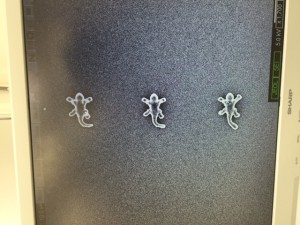
Research Project Update
This week in lab, we reviewed the methods and continued to work on the main challenge with my project, which is dispersing the nanotubes and achieving high boron nitride nanotube content. Kawata-sensei continues to motivate towards the goal, even though it seems we have tried every feasible method given my time here. The nicest experience this week has been running my experiments without supervision and even having the opportunity to test on my own. I was really happy to follow through with my own direction and test a method I found on my own and thought could work. Although the experiment ended up with results we don’t want, I followed the steps correctly and completed the protocol. I also tried fabrication on my own, and I was a bit surprised because I didn’t think I would be left with the TPP setup unsupervised. Finally, rather than the research progress, the highlight this week has been working completely independently.
Return to Top
Week 12: Final Week at Research Lab
What has changed the most about your perceptions and attitudes towards Japan? What has changed the most about your perceptions and attitudes towards the U.S?
I had a limited image of what Japan would be like before coming. I feel l have a better understanding of Japanese culture now. People and our media tend to portray Japan as primarily a crazy exotic place, and a great amount of what I imagined was unintentionally along the same lines. Before I just knew facts about Japan and now I have seen for myself and relate better to the culture. Things that I had heard and thought were extreme and impressive, I feel should be the standard like good customer service and cleanliness but overall the higher emphasis on respect and politeness in the country would be nice as a standard for the U.S. I do feel the U.S could improve on group consciousness and efficiency in a lot of areas.
I also have a stronger sense of what it means to be American and act American based on my interactions in the lab and can see some of the cultural pros and cons in both countries.
What has changed, if anything, about you personally? Are you a different in any way from when you first came to Japan?
For now I can’t tell how this experience has “changed” me directly but I can sense that this experience has had quite the impact. Now I see other possibilities and I feel more open towards trying different things and more confident in my decisions with what I’d like to study/do.
What were the most common daily frustrations you experienced with living in Japan?
Honestly, I did not face many frustrations aside from occasional language barrier frustrations. I think the amount of staring takes some getting used to though. I didn’t enjoy feeling like a foreigner all the time but I think in the long run it might have been the best part for my personal growth and it’s a fundamental aspect of studying abroad.
What will you miss most about living and working in Japan?
Generally, I will miss how clean everything is and how there is enough attention to detail to the smaller things like being handed a fork and having my food heated for me at seven eleven. I will miss the higher standard for respect and politeness. On a personal note, I will also miss being in the lab and the Tuesday meetings and hearing about other students’ projects.
How did this experience affect your attitudes towards academic research and your career goals?
I am excited to do more research internships and find out what I would potentially like to research in graduate school that I am now seriously considering. This experience has allowed me to learn a lot about graduate school and the graduate student life.
Final Week in my Research Lab
For the final week all the graduate students were busy preparing for this event in Shirahama that everyone had talked about since I arrived at the lab. I committed to going early on since my mentor had encouraged me to go and he was responsible for planning it as well. The conference was at Shirahama by the beach in Wakayama and it was honestly way better than I expected. Other post-docs we’re saying the presentations would be boring but I enjoyed hearing the different projects and the feedback from the professors. The conference was fun and relaxed. We stayed in a Japanese style inn and I got to go to the beach and watch the sunrise.
In terms of the research project we continued to look for ways to better disperse the nanotubes into the resin until we essentially ran out of the nanotubes for the amount of time left in my stay and also possible techniques in terms of duration of the protocol and other solvents we would need to acquire. Finally Kawata-sensei discussed it with a chemistry professor who had done similar research and they said it was essentially “almost impossible” to dissolve the nanotubes at this point. This part of the project I would want to pursue but I am also interested in perhaps nanomaterial research with more emphasis on biological applications.
For the final weekend in Japan most of the fellows hiked mount Fuji but since I went to Shirahama I preferred to stay at the beach a bit longer and relax before going back to Tokyo. However, I would love to hike mount Fuji in the future.
Return to Top
Week 13: Final Report
The sessions in Re-Entry Program definitely helped with what was ahead with the poster presentation and also looking into the future with all the sessions about resume building and going to graduate school. It was fun to see the Japanese fellows and some Japanese graduate students during their first few days in the U.S and hear about their adjustment. I’m happy we were able to continue the cultural exchange right away at home and it was nice to see the excitement of the Japanese fellows being in America.
When speaking to a family member about Nakatani RIES, I would say I learned about being professional and socializing in professional settings. Especially since every week I had meetings to attend with Kawata-sensei. Also every Tuesday there was morning tea time sessions where students and professors gathered for a light snack and tea or coffee in a formal gathering setting. Prior to this experience I had not attended such events. Even for events about the Nakatani fellowship, I had the opportunity to improve on socializing and discussing research, which I presented through many different platforms as well. The emphasis on hierarchy in the lab also allowed me to pay closer attention to how I could better appropriately address seniors and professors in particular.
When speaking to a professor, I would say I learned the fundamental processes behind having an independent research project. I experienced doing experiments independently and following a protocol based on what had been proven in a certain literature and the challenging aspects with certain experiments not going the intended way for the goals of the project. At the beginning my mentor and I made a brief timeline spanning every week of the internship period carefully deciding what we thought or I thought would be more than enough time for each portion. At first it seemed I could complete the different steps of my project in half the time but then I learned first hand the diverse setbacks or unexpected delays we could face such as not having a certain instrument or solvent readily available and time limitations.
Through weekly meetings with three other students I learned from Kawata-sensei’s advice that the approach to research shouldn’t necessarily be starting by trying to come up with a brand new idea or invention. Rather in the process of mastering an existing phenomenon or concept if we’re “lucky” we can come up with an idea that could lead to a breakthrough in the research. This mentality seems simple but in practice I think it is a lot more challenging to maintain.
When speaking to an employer I would say the most important thing I learned from Nakatani RIES was how to be at the forefront of a project while in a foreign country. I gained confidence through working in a new environment with a new culture. Though I had help with many things from assistance with housing and mentorship I learned to adapt on a personal level. In regards to doing research, I have gained the time management skills for respecting project and presentations deadlines. I became a better team member. While I had an independent research project, I was also working under the supervision of my mentor and to an extent in collaboration with another undergraduate student who had a similar research theme. We often presented our research as a group to the professor and I had situations where I had to make my own decisions but I also had to listen and discuss with my mentor and the other undergraduate student. As part of a “team” I adjusted particularly to my mentor and the undergraduate students way of working and communicating.
One aspect of cross-cultural communication while in Japan to understand is indirect communication. I learned how to understand indirect communication from different incidents. One incident was about time and work hours. My mentor was flexible with schedule and wouldn’t tell me when I had to come and when I could leave the lab. Instead I noticed he liked when we started experiments in the early afternoon and worked until late evenings. One week while I was determined to cut down on spending I decided I was going to take the free shuttle bus to avoid paying transportation at all costs. I brought just the right amount of money for lunch so I wouldn’t spend more than my daily low budget for food. One afternoon that week we started the experiment particularly late and technically there was one last part left which simply involved putting the sample on the magnetic stir and leaving it overnight. From my point of view it seemed ok to leave especially when my mentor told me “he couldn’t force me to stay and it was his fault for starting later”, but I was so focused on saving money I missed that he was possibly asking me to stay. The next day while we were joking around about how I could complain to Kawata-sensei, he joked that he would say he does my experiments for me and I realized then that maybe there was a good chance we had a miscommunication. In the long run I don’t think this had an impact but I gained awareness from even reflecting on this.
I would encourage a student to apply to the program or generally to have a research internship abroad. I am immensely grateful I had this opportunity and I wish every student would go through this experience. Sometimes students who have never been abroad say they “fear” being on their own in an unfamiliar place away from friends and family , but I would say by being on my “own” this summer I was able to focus on my goals and learned about my preferences, which makes me excited about the future. Now in terms of academics I can imagine what specific themes I’d like to do research in and what classes I’d like to take. Lately I have been focusing on the semester ahead, and in the future I would definitely like to study abroad and do research at the international level again.
Follow-on Project Plan
For my follow on project, the study abroad advisor at my college invited me to present the research experience at a study abroad conference held at the school in October. For this conference, my advisor would like me to include a cultural display, which I haven’t decided on but we will work together to see what would best. I also have the opportunity to discuss my experiences in a smaller setting September 12th with students interested in hearing about the program and going abroad.
Return to Top
Tips for Future Participants
- Pre-Departure Tips: For Pre-Departure study as much Japanese as you can and as much as you can about Japan in general by looking at travel guides for example. Don’t wait until the last minute to pack and bring your best clothes. Try and start reading the science papers for your project.
- Orientation Program Tips: Enjoy Tokyo with the other fellows, maybe have an idea or list of what you absolutely must see and make sure to see everything on your list but also wander and have unplanned excursions. Keep up with language class by doing the homework and practicing Japanese. Read the science papers about your project and try to understand to prepare for the internship.
- Mid-Program Meeting Tips: Make sure to express any concerns you might have regarding research or life in Japan with the program staff because you can get great advice. Mid-Program meeting is also a good time to catch up and exchange stories with the other fellows.
- Working with your research lab tips: One thing is I wish I had been less shy. Strike up conversations with your lab mates, especially during lunch or when they don’t look busy or are taking a break even if they are speaking Japanese. Practice the Japanese you learned in class and try learning some of the Osaka dialect, which I wish I had learned more of as well. Don’t worry too much about being a “ foreigner” and be respectful.
- Living in Osaka: Bring summer clothes that are also appropriate casual wear for the lab. It is really hot during July/August. You’ll sweat through your clothes anyways but fabrics like linen might be best. Eat lots of takoyaki, travel around the Kansai region during the weekends, go to festivals and see awesome fireworks.
- Language Study Tips: Make your own language study plan for the internship period. If you can try to keep taking classes at your host university. Downloading an app can help with learning and there’s also a good amount of resources online for self-study.
- What Gifts to Bring: bring gifts specific to your hometown or your university
- What to Eat: try everything! Osaka fast food is a must have i.e. Takoyaki and Okonomiyaki..
- What to Buy in Japan: 100 yen stores are really awesome you can get your toiletries, towels, kitchenware and other items for your housing there instead of packing them)
- What to Do in Japan: go to Karaoke, game centers, stay at a ryokan and go to onsen
- Places to Visit in Japan: Kyoto, Miyajima if you can (those were my favorite) but really you can’t go wrong with anywhere you choose to visit check japan-guide for top suggestions
